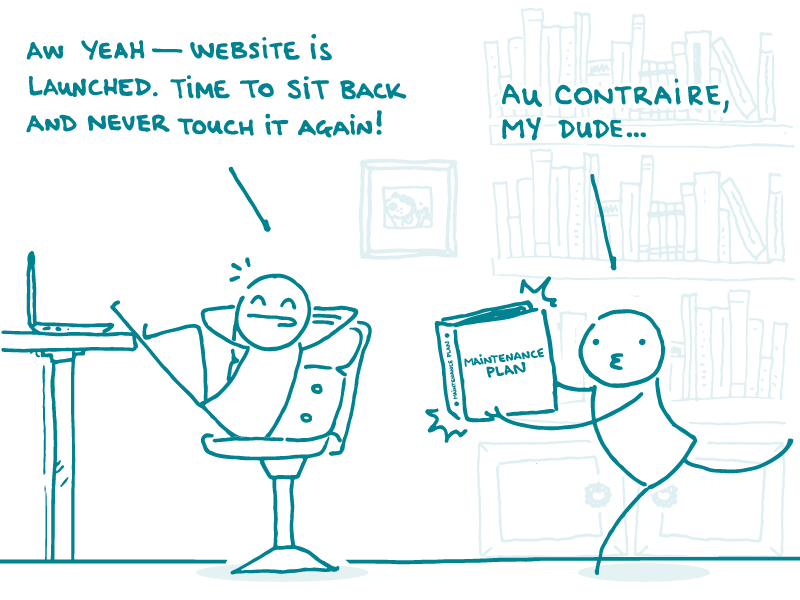
You’ve finally launched your website. As an all-star health communicator, you’ve done everything you can to make it great. You tested with users. You tailored the content to your audience. You made sure the site is accessible. And of course you wrote it all in plain language.
Your work is done, right? Not so fast, dear readers! Now you need a way to keep that beautiful content as up to date as the day it launched, which will help your users stay happy and engaged. You need… wait for it… a content maintenance plan!
A content maintenance plan answers questions like:
- How and when do we update content?
- Whose job is it to update content — and who’s responsible for approving changes?
- How do we know when it’s time to remove old content?
- When we add new content, how do we decide where it goes?
Important stuff, right? Now that you know what it is, check out our top 3 tips for creating a stellar content maintenance plan.
1. Get really specific about adding and removing content. No matter how thoughtfully you’ve planned your site, you’ll probably realize soon that you need to add new pages. And there will be other pages that are no longer needed. It’s hard to make good decisions about this on the fly, so set criteria for when and how you’ll add or remove content.
Be sure to plan for where new content will go. You’ll also need to figure out what removing old content entails — do you need to archive it somehow? Can you just delete it? Decide how this will work in advance.
2. Get the right people on board. Having a plan isn’t enough — you need to know who’s going to do the plan. Figure out who will handle content maintenance tasks, like fixing broken links, and make these tasks a priority. You don’t want them to fall to the bottom of the to-do list every time.
You also need to decide who will review content when you’re making updates and who needs to approve new content. Put it all in the plan! Nailing down roles and responsibilities now will save you headaches later.
3. Make a maintenance schedule — and stick to it. A maintenance schedule tells you when to check your content for accuracy and make updates. This is also a good time to catch broken links and other out-of-date information.
We recommend reviewing each page at least once a year, but you could decide to review every 6 months or every 2 years, depending on the type of content and your goals for the site. We’re big fans of scheduling the review of large sites that have many pages throughout the year — and, you guessed it, putting all the details in the plan.
The bottom line: Make a plan for keeping your site’s content up to date — it’ll make your life easier and your users will thank you.
Tweet about it: Making a plan to keep your #HealthLit site up to date is a win for you and your users, says @CommunicateHlth: https://bit.ly/2Ahiy8o
Browse recent posts